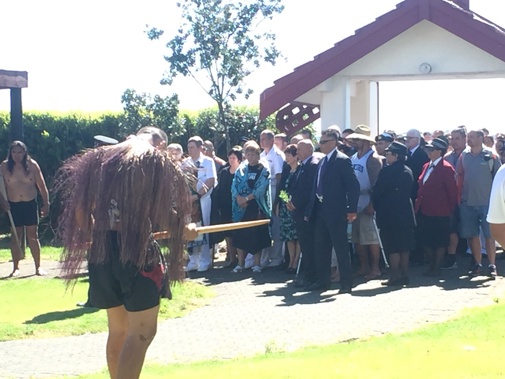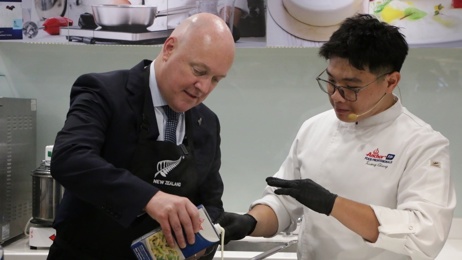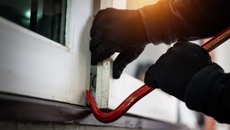
The banning of a collection of media outlets from Waitangi’s Te Tii Marae today goes against everything I’ve ever learned about Māori culture and practices, and protocol on a marae. Like many of the local leaders here, I found it disappointing.
Usually at Waitangi the media gives a koha (donation) to the marae, and it’s a sign that each organisation respects what leaders are doing in hosting the commemorations for this country’s most historically significant day.
Media are able to film the pōwhiri, the traditional welcoming of politicians on to the marae grounds. We can record, take photos, listen to the politicians speak, and pay our own respects to the people of Te Tii and to the history enshrined in the Treaty of Waitangi. We can relay that to the rest of New Zealand through our various mediums, through words in print, over the radio, or on television.
This year, however, the marae hoped to change things by offering exclusive coverage rights to media network Newshub - for a fee of $10,000.
Local leaders and politicians have publicly voiced their disagreement with the offer, which was declined by both Newshub and One News. They’ve also condemned the resulting ban of these organisations, and other media with them, from entering the marae grounds.
It’s as though those managing Te Tii have forgotten our media are there to mark the occasion for the rest of the country who can’t be, and that we do so out of respect for the marae, its place in Waitangi celebrations, and the history of Te Tiriti itself.
The only thing this lack of respect achieves is putting a limit on what reporters and camera personnel can see and do. If the only thing you can see is rows of police under instruction to push media away, to obstruct their view, and put up blockades, then that’s what will be reported.
There have not been any major protests this year, yet it makes the start of the Waitangi Day commemorations look just as dramatic as years before.
My Newstalk ZB colleague and I were allowed on to the marae today, and in a quick discussion with Te Tii management we established we could watch the pōwhiri and welcome of Governor General Dame Patsy Reddy and her Navy entourage from inside the grounds, just as any member of the public could do. We saw the Chief Justice Sian Elias and fellow judges welcomed soon after.
We were the only media allowed to do so.
We reported on the pōwhiri, we spoke to those on the marae, smiled with children waving flags. I was offered lunch in the Marae’s wharekai, soon after Dame Patsy herself had left the premises.
After we’d established why we were there, everyone we spoke to was friendly. The Dame and her husband said their welcome was warm. It was in stark contrast to what you saw on television screens at 6pm last night.
We reported with utmost respect as to the guidelines Te Tii put to us. We didn’t take video, because they asked us not to.
As Maori Party co-leader Marama Fox told me quite rightly, there should be a middle ground that can be reached out of respect for the marae and for our history. If it’s a koha, where you give what you can afford or what is appropriate, and in return you are respected for the job that you are doing in sharing New Zealand’s history with its people, then that should be it.
It works both ways, Te Tii Marae should be celebrated for the role it plays in New Zealand’s history, and media should be allowed to report on the historic events happening there, for the benefit of all New Zealanders.
It doesn’t make sense to have it neither way.
Take your Radio, Podcasts and Music with you









